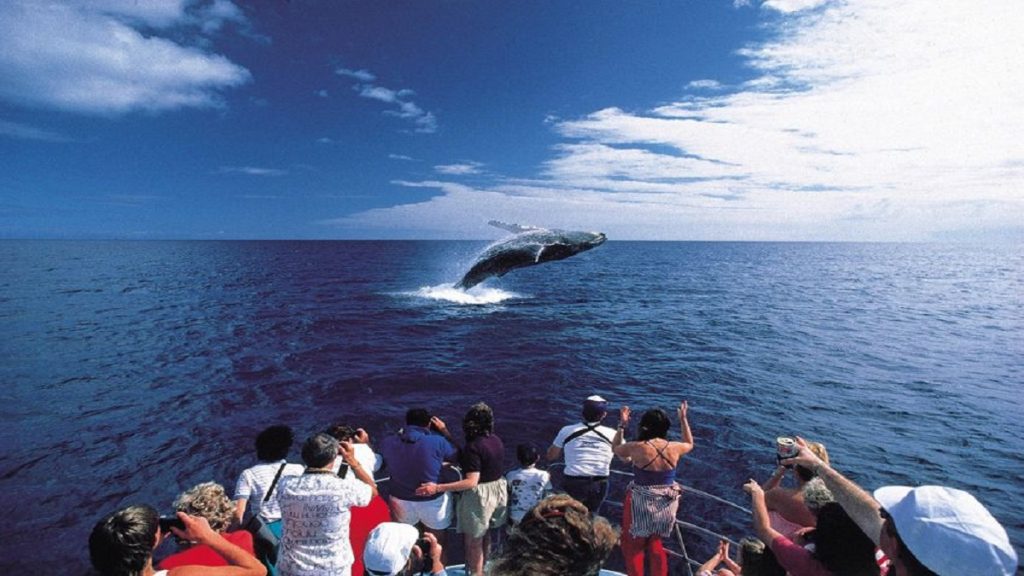
This guide will take you on a journey to discover the best places for dolphin and whale watching, offering an insight into the lives of these creatures, their conservation and how you can be a part of this awesome adventure. The vastness of the world’s oceans is beyond imagination, and among its most enchanting inhabitants are dolphins and whales. These magnificent creatures have fascinated humans for centuries, inspiring awe and deeply connected to the mysteries of the sea. Dolphin and whale watching offers a unique opportunity to see these giants deep in their natural habitat, an experience that can be both exhilarating and educational.
The Magnificence of Dolphins and Whales
Best Places For Dolphin and Whale Watching are some of the most fascinating marine mammals on Earth. Dolphins, known for their playful behavior and remarkable intelligence, belong to the Delphinidae family. These friendly creatures are often seen hovering near the water’s surface, jumping for joy and boat wakes. Their clicks, whistles, and echolocation abilities create a unique and complex form of communication.
On the other hand, whales, the ocean’s gentle giants, belong to the order Cetacea. They come in various species, each with distinct characteristics and behaviours. From the mighty Blue Whale, the largest animal on the planet, to the acrobatic Humpback Whale known for its breaches, observing these creatures in their natural habitat is a humbling experience that fosters a profound appreciation for the oceans.
Exploring the Best Places for Dolphin and Whale Watching
Monterey Bay, California:
This stunning coastal region is renowned for its rich marine life. The Monterey Bay National Marine Sanctuary is home to numerous species of dolphins and whales, including Orcas, Gray Whales, and Risso’s Dolphins. The Monterey Bay Aquarium offers informative guided tours that shed light on the fascinating behaviours of these marine mammals.
Azores, Portugal:
The Azores archipelago is a paradise for Best Places Watching Dolphin. Sperm Whales, Beaked Whales, and the charismatic Common Dolphins frequent its deep waters. Tour operators provide eco-friendly tours that prioritize the well-being of the animals and educate visitors about marine conservation.
Hervey Bay, Australia:
This coastal gem is celebrated as the “Whale Watch Capital of the World.” Humpback Whales stop here during their migration, allowing for exceptional up-close encounters. The unique behaviour of these whales, such as tail slapping and breaching, can be observed on guided tours.
Maui, Hawaii:
The warm waters of Maui attract a variety of dolphins, including Spinner Dolphins known for their acrobatics. The island offers boat tours that offer a chance to spot these marine mammals and emphasize the significance of protecting their habitats.
Mirissa, Sri Lanka:
Mirissa has gained fame for its resident population of Blue Whales. Responsible tour operators offer boat trips that adhere to ethical guidelines, promoting a respectful approach to wildlife observation.
The Impact of Responsible Whale Watching
As the popularity of dolphin and whale watching grows, it’s crucial to approach these activities responsibly. Unregulated tourism can disrupt the animals’ natural behaviours, impact their habitats, and even contribute to stress-related health issues. Travellers can enjoy their encounters while supporting conservation efforts by choosing eco-friendly tour operators that follow guidelines to minimize disturbances.
The Connection Between Dolphin, Whale Watching, and Conservation
Dolphin and whale watching experiences can be powerful tools for promoting marine conservation. Witnessing these creatures in their natural environment instils a sense of wonder and responsibility for their well-being. Many tour operators allocate a portion of their proceeds to conservation initiatives, helping fund research, habitat preservation, and public education campaigns.
Tips for an Enriching Dolphin and Whale-Watching Experience
Choose the Right Operator: Opt for tour operators with a proven commitment to responsible wildlife viewing and conservation.
- Respect Their Space: Observe from a distance that doesn’t disrupt the animals’ behaviour. Avoid approaching them too closely or encircling them with boats.
- Minimize Noise: Marine mammals are sensitive to sound. Keep noise levels down to prevent stress for the animals.
- Educate Yourself: Learn about the species you’re likely to encounter, their behaviours and the conservation challenges they face.
- Reduce Your Impact: Practice eco-friendly habits beyond the tour, such as reducing plastic use and supporting organizations dedicated to marine conservation.
Conclusion
Dolphin and whale watching transcends ordinary tourism; it’s a window into the beauty and complexity of marine life. These experiences remind us of our interconnectedness with the oceans and inspire a deep reverence for the creatures that inhabit them. By embarking on responsible dolphin and whale-watching journeys, we become spectators and active participants in conserving our planet’s most majestic inhabitants. So, pack your curiosity and embark on an adventure that promises awe-inspiring moments and a commitment to safeguarding the wonders of the deep for generations to come.